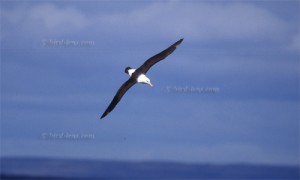 Quickly I realized that the storm was the dominant element of Falkland. For two days, hurricane winds swept over the island with wind force eleven, and alternately hail and snow storms followed the downpours. On the more than 400 Falkland Islands there are only 80 settlements, where approximately 500 English sheep breeders live. Only the towns of Stanley and Mount Pleasant are bigger. For the King Penguin (Aptenodytes patagonicus), the Gentoo Penguin (Pygoscelis papua), the Rockhopper Penguin (Eudyptes chrysocome) and the Magellanic Penguin (Spheniscus magellanicus), these islands represent the ideal habitats in the middle of the nutritious South Atlantic seas. The Falkland archipelago offers hundreds of thousands of seabirds ideal breeding possibilities. Although the motifs are mostly close to the grasp, many images remain only visions, because the weather is the limiting factor.
Quickly I realized that the storm was the dominant element of Falkland. For two days, hurricane winds swept over the island with wind force eleven, and alternately hail and snow storms followed the downpours. On the more than 400 Falkland Islands there are only 80 settlements, where approximately 500 English sheep breeders live. Only the towns of Stanley and Mount Pleasant are bigger. For the King Penguin (Aptenodytes patagonicus), the Gentoo Penguin (Pygoscelis papua), the Rockhopper Penguin (Eudyptes chrysocome) and the Magellanic Penguin (Spheniscus magellanicus), these islands represent the ideal habitats in the middle of the nutritious South Atlantic seas. The Falkland archipelago offers hundreds of thousands of seabirds ideal breeding possibilities. Although the motifs are mostly close to the grasp, many images remain only visions, because the weather is the limiting factor.
The history of the islands, which are now a paradise for us, is a single chronicle of exploitation: millions of penguins and seals fell victim to the oil industry of the 19th and beginning of the 20th century. It was only in the past decades that the bird’s reserves could recover. One of the first trips led to Sealion Island, where I could photograph the Southern Elephant Seal (Mirounga leonina) and Gentoo Penguins.
The only species of albatross that breeds on the Falklands is the Black-browed albatross (Thalassarche melanophris), which is also called the Mollymauk. I was able to photographed this impressive bird on New Island. The world’s largest population of the Black-breed albatross is spread over twelve remote Falkland Islands, the westernmost of the Falkland Islands. The breeding colonies of a total of approximately 400,000 pairs are always located on steep cliffs, so that the winds can be used for starting and landing. Like the penguins, the Albatroses come ashore for breeding and raising the young. They spend the rest of the year in the open sea, where they mainly feed on squids and krill. In the storm, they can glide over the water day by day and in a spectacular glide without a wing flap. During calm wind, however, they are awkward because their long, narrow wings are rather unsuitable for active flying. In their chimney-like nest, the Black-browed Albatross lay a single egg, from which the chick hatches around Christmas. At the end of April the youngs leave the islands and return to their place of birth after six to seven years to find a partner. The lifelong bond is strengthened every year by a fascinating wedding ritual.
The most important part of my equipment became plastic bags, into which I packed everything lightning fast as long as the rain did not pour. But the hardships were rewarded when the sun broke through the cloud cover and even flight recordings were possible. But the whole show takes only a few minutes. Then the light gap between the cloud bands becomes ever narrower. From the black sky, the rain flows again.
Bird-lens is mainly a website to suit the growing demand for top shots of the species of the Western Palearctic. But of interest is the phenomenon of bird migration in general. Trips to tourist and non-tourist spots like Thailand or the Seychelles to capture images of rare migrating birds are part of the program and were already very successful. More nice images you find in the gallery or in the “Pictures Shop”. Just give me a message, if Bird-lens could serve you with images also outside the range of the Western Palearctic. Images of e.g. South America are well on stock, too. The nice images you find in in the gallery are only a first impression, what you might find in the gallery in the “Picture Shop” too. Just give bird-lens.com a message, if bird-lens.com could serve you with an image needed before other pictures are online.